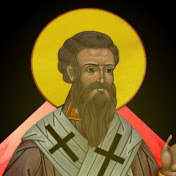Then Bezaleel made the ark of acacia wood. . . . He made two cherubim of beaten gold; he made them of one piece at the two ends of the mercy seat. Exod. 37:1, 7.
The entire tabernacle of witness was made for the sake of the ark of the covenant. It was constructed in this manner: its length was two cubits and a half. Its width was one cubit and a half. And its height was one cubit and a half. Irenaeus (c. 180, E/W), 1.394.
Just as the ark was gilded both inside and out with pure gold, so likewise was the body of Christ pure and resplendent. Irenaeus (c. 180, E/ W), 1.570.
The ark is declared to be a type of the body of Christ, which is both pure and immaculate. Irenaeus (c. 180, E/W), 1.576.
Those golden figures, each of them with six wings, signify either the two bears (as some would have it) or rather the two hemispheres. For the name cherubim meant “much knowledge.” . . . For He who prohibited the making of a graven image would never Himself have made an image in the likeness of holy things. Clement of Alexandria (c. 195, E), 2.453.
When forbidding the likeness to be made of all things that are in heaven, in earth, and in the waters, he declared also the reason: to prohibit all material display of an unseen idolatry. For He adds: “You will not bow down to them, nor serve them.” . . . The golden cherubim and seraphim were purely an ornament in the figured fashion of the ark. It was adapted to ornamentation for reasons totally remote from all condition of idolatry—the reason for which the making a likeness is prohibited. The cherubim are evidently not at variance with this law of prohibition, because they are not found in that form of likeness. Tertullian (c. 207, W), 3.314.
